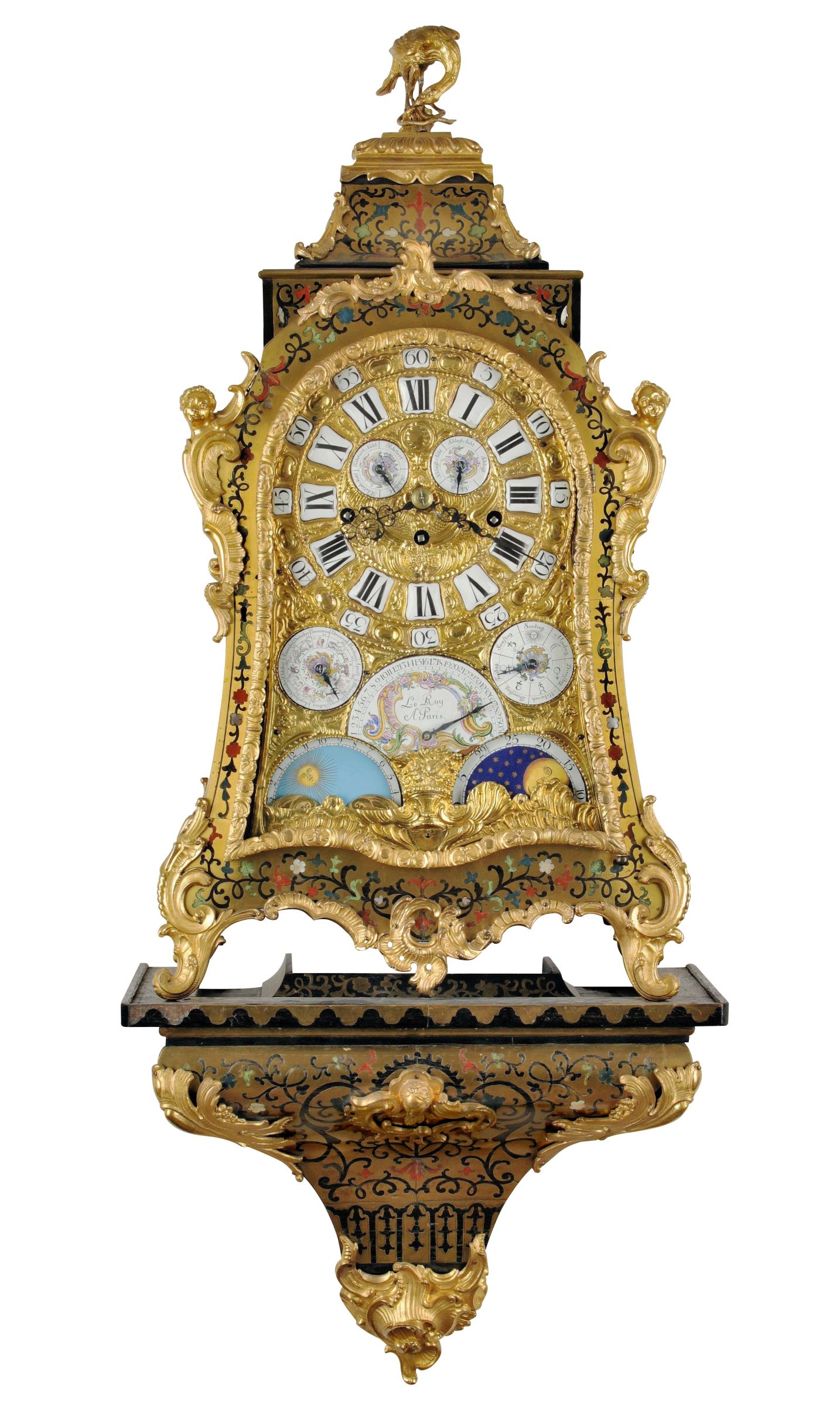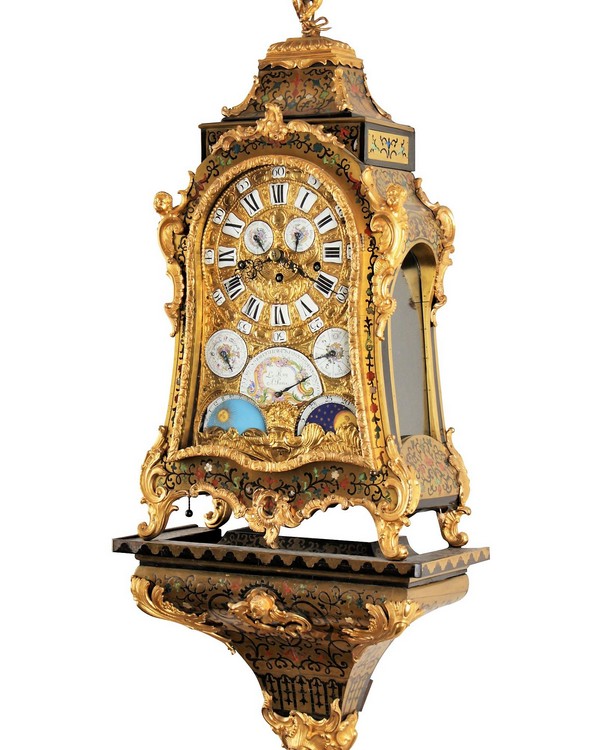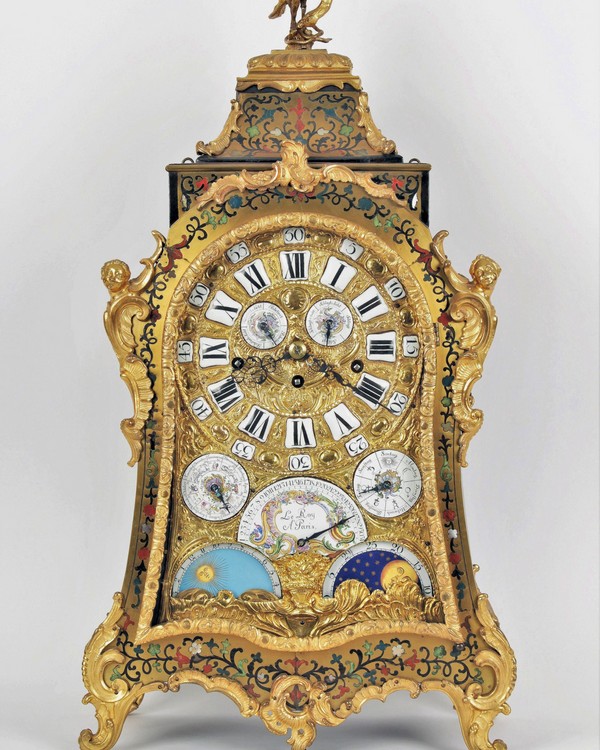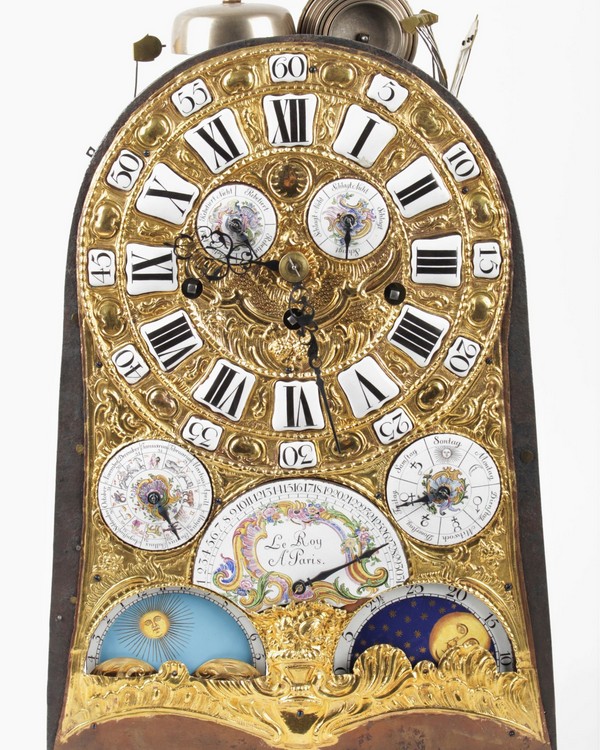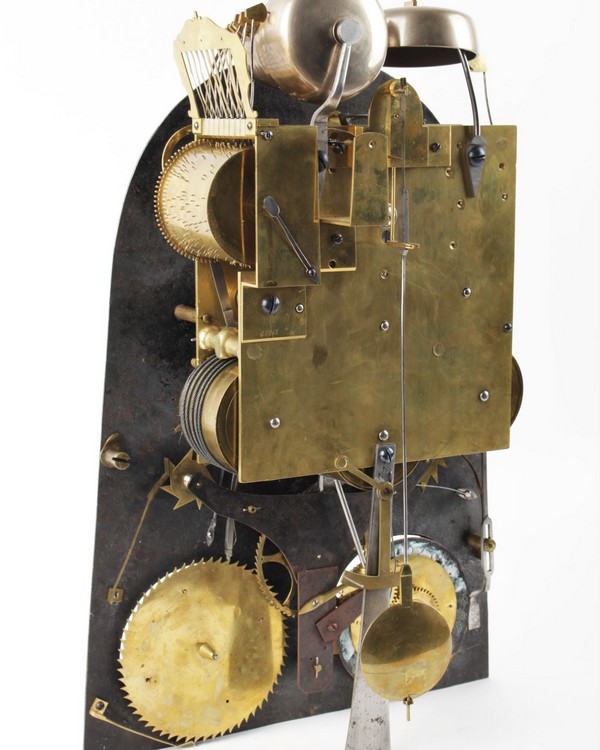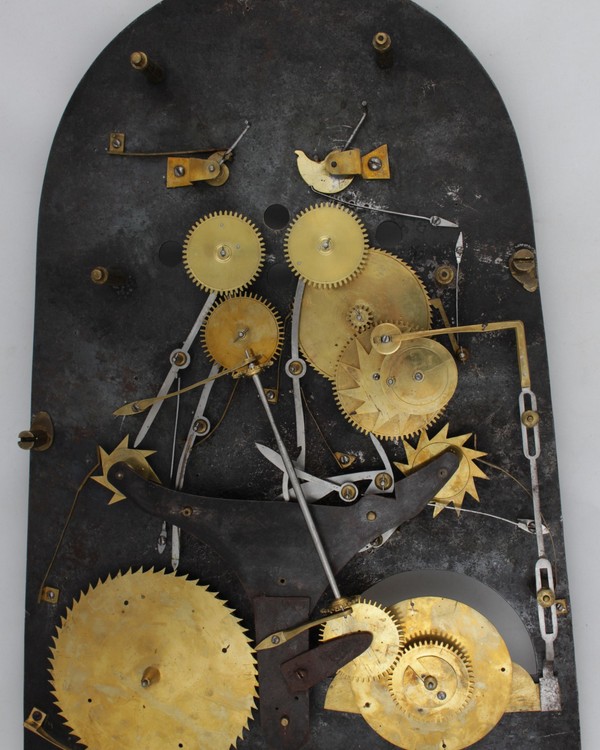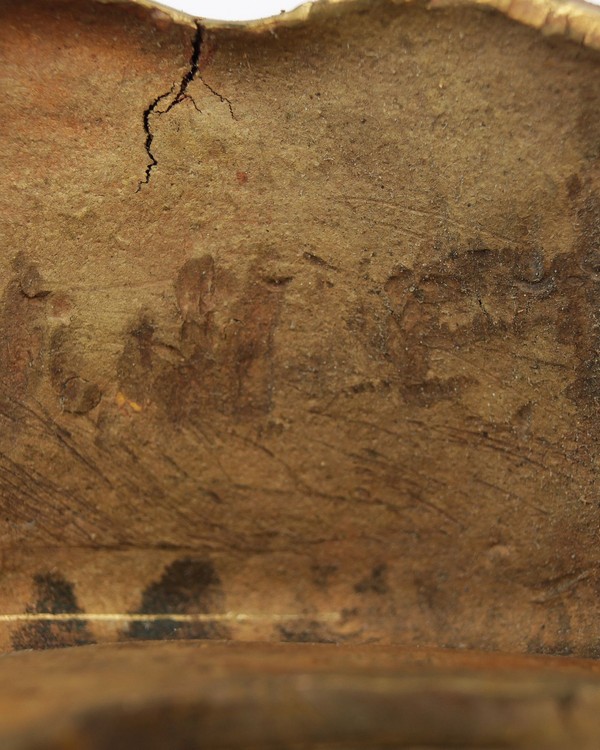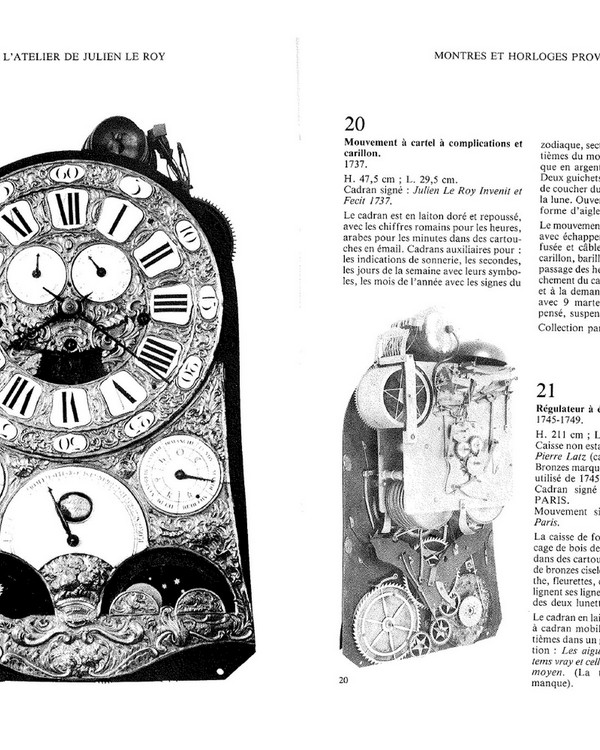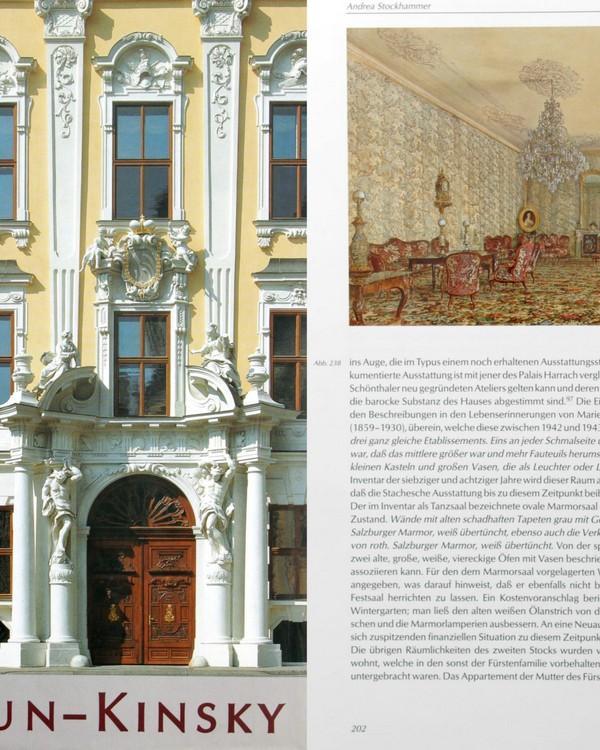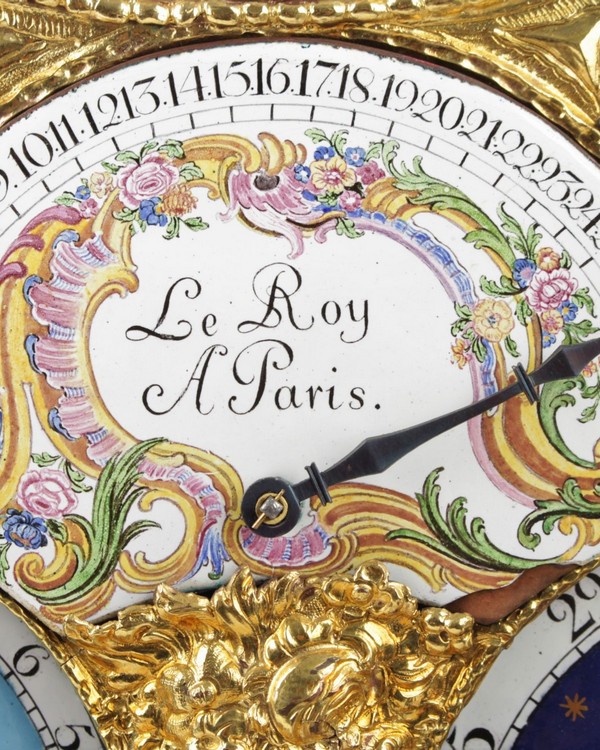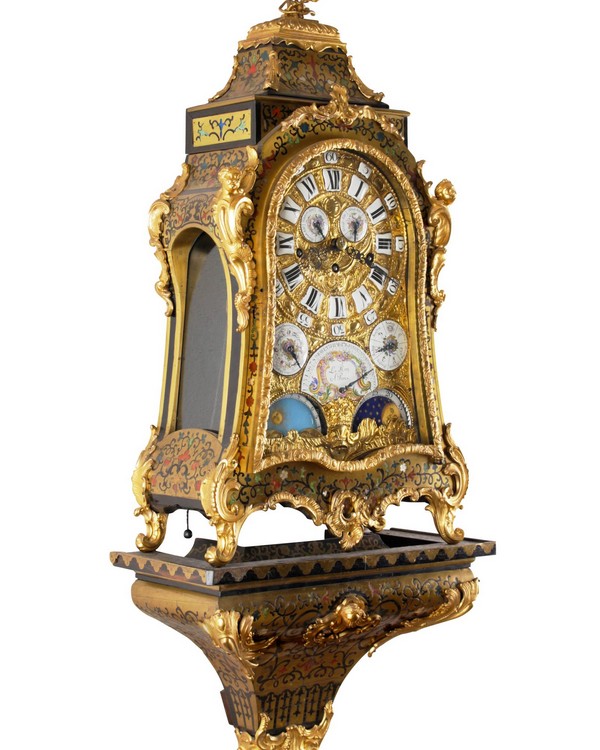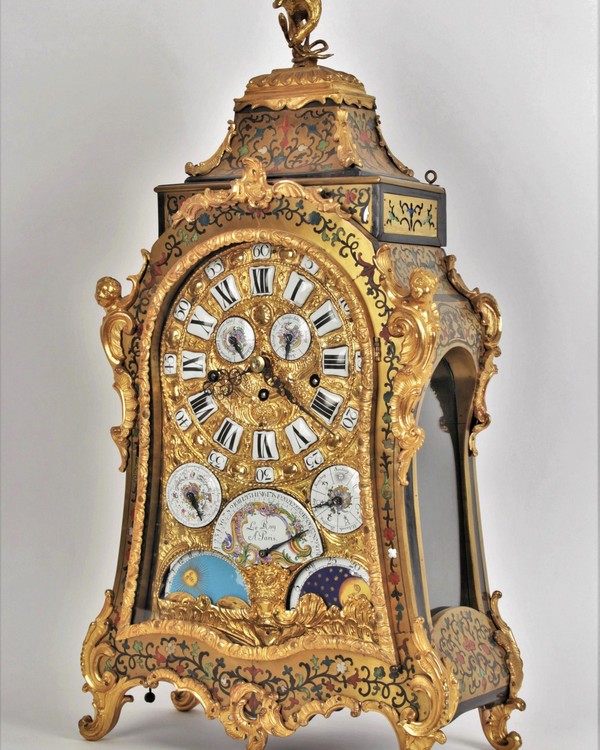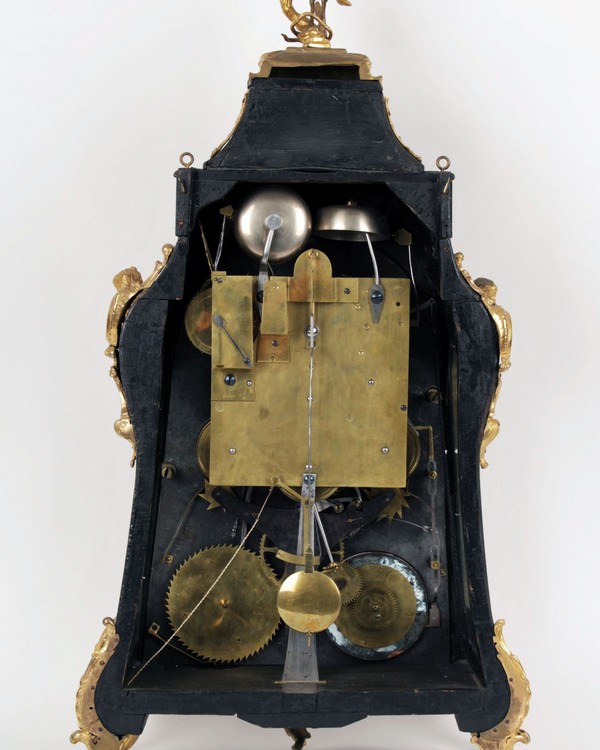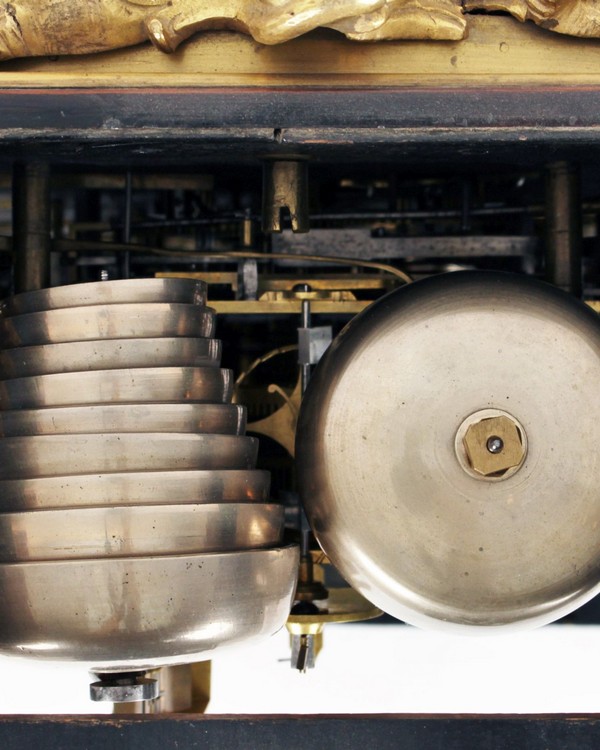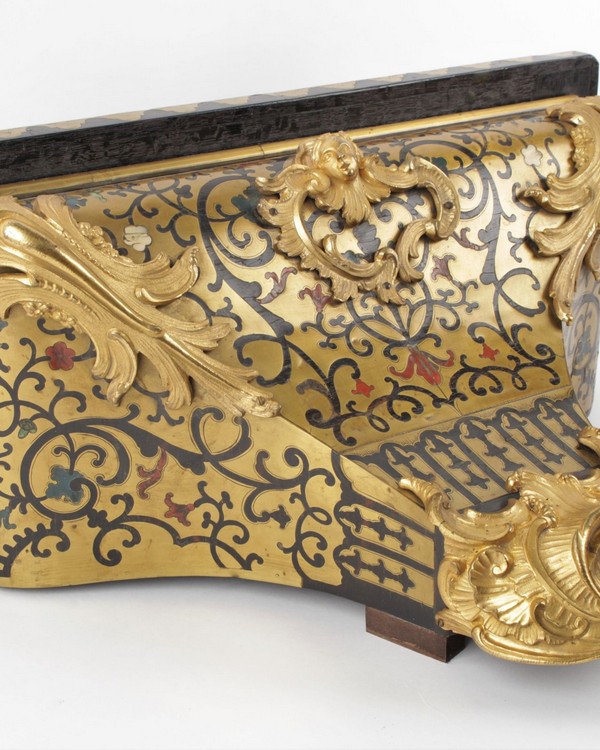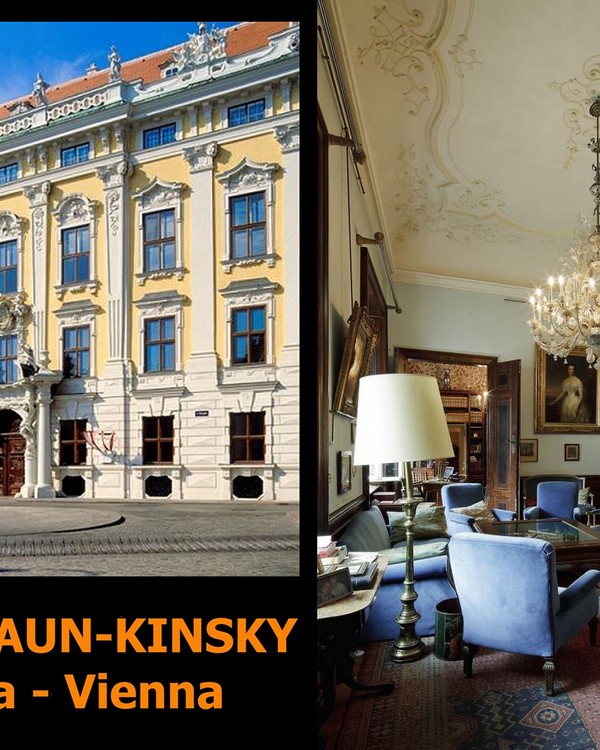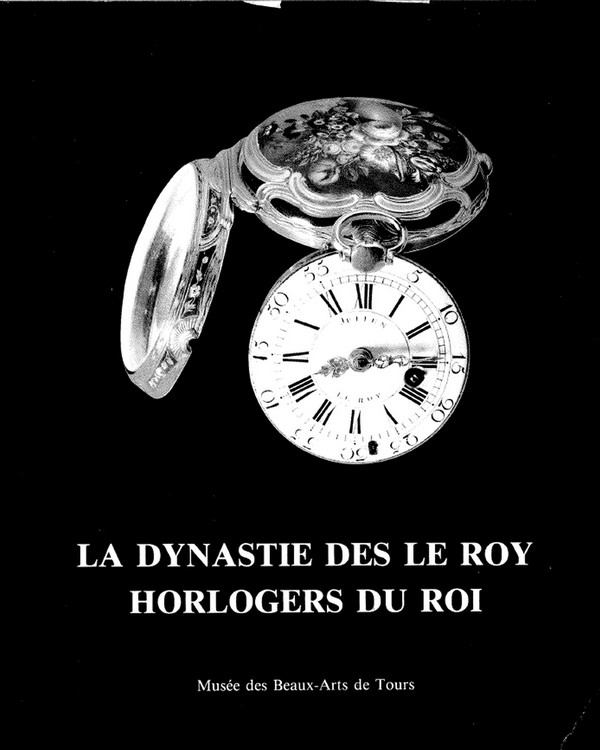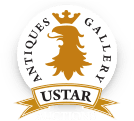For more info and video please visit https://leroy-clock.com
ONE OF THE BEST CLOCK OF ITS TYPE IN THE WORLD
This unique astronomical musical clock was crafted at the legendary Paris-based clock making workshop of Julien and Pierre Le Roy in the second third of the 18th century, likely around 1740. During this time France was ruled by King Louis XV. and was a European centre of culture. This extremely rare Baroque console clock represents a beautiful example of the very finest French clock-making and cabinet-making artistry. Without doubt, it is one of the finest clocks of its type in the world.
Such a highly decorative and mechanically complex clock is entirely unavailable on the world art market. Similar clocks just barely can be found amidst the collections of the world’s finest museums. Clocks of this type were custom-made for the wealthiest members of royal families and aristocracies. For example, King Louis XV. had a similar astronomical clock made for Madame de Pompadour.
This particular clock comes from the Palais Daun-Kinsky, one of the most notable High Baroque palaces in Vienna. And this may have been a key factor why this masterwork remained preserved in such a fine condition.
Period: 2nd third of the 18th century
Clockmaker: Julien Le Roy, born in 1686 in Tours, France, died in 1759 in Paris
Clockmaker: Pierre Le Roy, born in 1717 in Paris, died in 1785 at the same place
Movement: verge escapement, duration of run 8 days, annual calendar, displays hour, minute, day of the week with astronomic symbols, months, position of the sun considering the length of the day, moon phase and moon calendar, zodiac signs, length of the month, retrograde date display, massive brass spring mechanism, triple steel string and screw, rod pendulum with a brass lens, suspension spring, Carillon quarter hour striking system upon a total of 10 bells, strikes and repetitions can be turned off.
This clock plays a melody every 15 minutes, while on the hour it plays both a melody and strikes the respective number of hours.
The clock’s indicator functions are located underneath the clock dial on a metal base plate.
Dial: labelled Le Roy A Paris, hand-decorated enamel dials with rich Baroque ornamentation, original blued steel hands, handcrafted gold-plated sheet copper with relief ornaments, wrought iron base plate.
Case: oak corpus, fire-gilted bronze (one bronze cast is signed), brass, mother-of-pearl and horn of various colour.
The clock case contains elements from the late Baroque era and was crafted in fantastical design and ornamental spirit of the Rococo era. The case is richly decorated with ornaments covered in fire-gilded bronze. One bronze cast is signed by the fondeur-ciseleur. The top of the case contains a bronze sculpture depicting an eagle and snake in battle. The sides of the case are decorate with bronze sculptures featuring the heads of Baroque putto. The case is made from oak, inlaid with brass, mother-of-pearl and horn of various colour. The sides are partially glassed-in. It is known that the clockmaker Julien Le Roy worked closely with the painter Thuret, which may have helped the former to imprint upon his clocks an appearance of lightness and ease of motion. This is assisted by the colours of the selected materials, which stand in elegant contrast to the shiny gold-plated bronze statuettes. The case is decorated with a loose plant motif, combining black, red, green and blue. The sumptuousness of the case is underscored by the authentic wall console, made from the same materials as the case itself.
Condition: clock is in fully functional condition, signs of age and usage, the case, dials and movement is preserved in exceptionally good condition with minor damage.
Size: 124 x 50 x 24 cm
Weight of the movement: 8.3 kg
Total weight of the clock: 30 kg
Provenance: from the estate of Prince Frantisek Oldrich Kinsky (1936 - 2009).
This particular clock comes from the Palais Daun-Kinsky in Vienna.
Literature: Palais Daun-Kinsky, Vienna, Freyung / Beiträge... von Hellmut Lorenz, 2001, page 202.
Documentation concerning the origins of the clock includes photographs from the palace interior showing this clock displayed on a mantelpiece. Additionally, a book entitled Palais Daun-Kinsky, published in 2001, contains photographs of this clock printed on page 202.
Literature: European Clocks in The J. Paul Getty Museum, ISBN 0-89236-254-5, California, 1996, page 185-190.
This publication states that Julien Le Roy produced astronomical clocks of high technical quality.
Literature: La Dynastie des Le Roy, Horlogers du Roi: Exposition, Musée des Beaux-arts de Tours, 11 avril-14 juin 1987, page 25, 64 and 65.
Pages 64-65, in the book La Dynastie des Le Roy, Horlogers du Roi, feature a picture of a similar astronomical clock movement unit built by Julien Le Roy. In comparison to the clock presented here, both can be said to be functionally very similar, but the one in the book mentioned contains far less elaborate and decorative enamel dials
Page 25 of the before mentioned book also states that Julien Le Roy created only three astronomical clocks until the year 1739. On the part of Julien Le Roy this technically and financially very demanding production was even approved by the French Royal Academy of Sciences.
One of these three astronomical clocks was created for the affluent director of the Paris Observatory, Giovanni Domenico Cassini (1625–1712). This famous Italian spent 41 years as an astronomer and astrologer for French King Louis XIV.
Another astronomical clock was created for the French director of the Academy of Sciences, namely the philosopher, mathematician, and naturalist Pierre Louis Moreau de Maupertuis (1698–1759).This clock movement is now situated in the Musée dHistoire in the French town of Saint-Malo.
Another of these astronomical clocks was made for the French astronomer Jacques Cassini (1677-1756), son of Giovanni Domenico Cassini, who studied comets, planets and planetary moons. At the age of seventeen, Jacques Cassini became a member of the French Academy of Sciences, and soon after a member of the Royal Society of London.
In all likelihood, the clock presented here was made on order of astronomer Jacques Cassini. Later, the piece may have been given as a gift – or even made for – a member of the Kinský aristocratic family. It was Stephan Wilhelm, 1st Prince Kinský of Wchinitz and Tettau (1679 – 1749), who in 1729 was named by Emperor Charles VI. as an Imperial Ambassador to the Court of King Louis XV. of France. In this post he went on to cultivate close personal ties with the highest levels of the French aristocracy. One can therefore assume that it was this service which helped to later secure the transfer of such an exquisite clock to the Palais Daun-Kinsky in Vienna.
Julien Le Roy ran his own celebrated clock and watch making workshop, located in La rue de Harlay in Paris, France. In this workshop, Le Roy both personally made and also oversaw the construction of clocks and pocket watches. His son, the brilliant clockmaker Pierre Le Roy (1717-1785), served as his father’s right-hand-man and close collaborator. After the death of Julien, Pierre took over the workshop from his father. The Julien and Pierre Le Roy workshop boasted a broad clientele of wealthy customers, including many members of European aristocratic and royal families. Clock cases were supplied to this workshop by the very best manufacturers, for example André-Charles Boulle, the Caffiéris, Balthazar Lieutaud, Robert Osmond, Jean-Joseph de Saint-Germain and Antoine Foullet. Clock faces were frequently supplied to the workshop by Antoine-Nicolas Martiniere, Nicolas Jullien, and likely also Elie Barbezat.
Julien and Pierre Le Roy clocks and watches can be seen at the finest museums around the world. These include the Musées du Louvre; Musée d’Horlogerie in La Chaux-de-Fonds; JP Getty Museum in California; at the Palace of Versailles; in the Musée Jacquemart-André; in the Musée Cognacq-Jay; in the Petit Palais in Paris; in the Victoria & Albert Museum in London; in Waddesdon Manor, Buckinghamshire; in Rijksmuseum, Amsterdam; in the Musées Royaux d´Art et d´Histoire in Brussels, and many more.
On a final note, it is important to add that this clock represents a discovery which significantly enriches our knowledge and understanding of the clock-making work of the Julien and Pierre Le Roy workshop. Such an outstanding clock can be ornament in any private collection or museum in the world.
Export of the clock permitted worldwide, enclosed an export permit.
More pictures:
